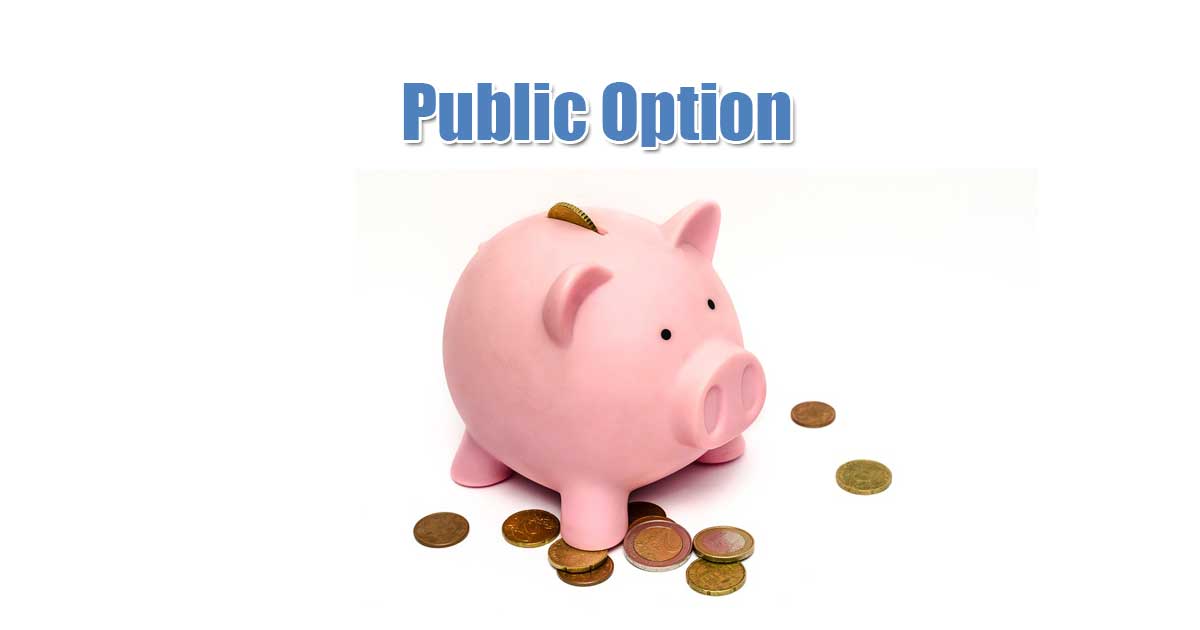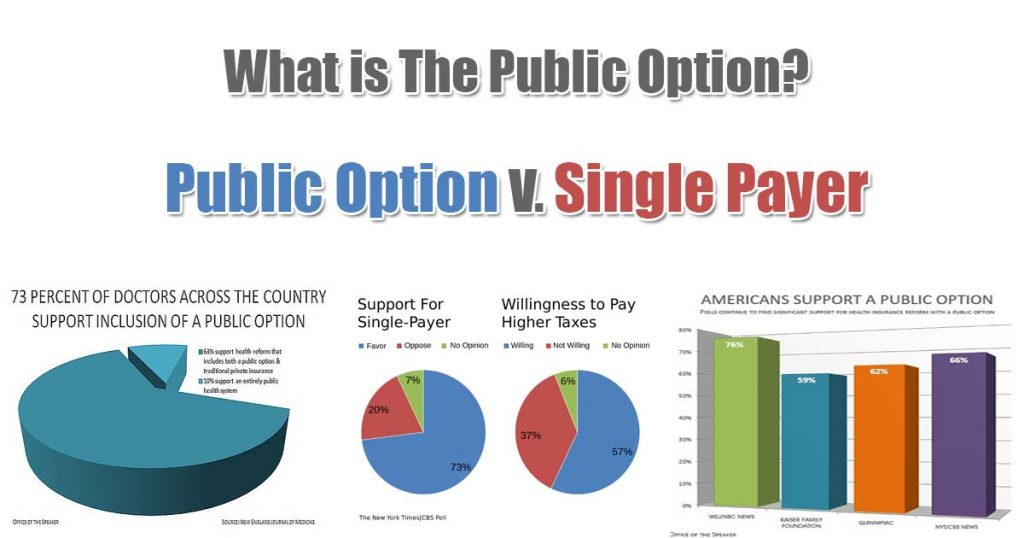ObamaCare and the Public Option








ObamaCare Public Option Explained
ObamaCare allows for a public option, a public health insurance plan that can compete with private companies and works with the ACA. This “ObamaCare public option” can work a few ways.
President Obama previously expressed support for a national public option and suggested that states create state-based public options via sec. 1332 waivers, especially in regions with low competition. Initially it looked like only state-based options would fly, but recent action in the Senate and additional support from Hillary Clinton and Bernie Sanders, means that a national public option could be on the table too (if Democrats can get an ungutted bill by the Republican controlled Congress).
Below we explain the public option the President suggested in his 2016 JAMA editorial United States Health Care Reform Progress to Date and Next Steps, how a national public option could work, how the sec. 1332 waiver works, how a public option is different from single payer, and finally how a public option can work with Obamacare.
The non-partisan Congressional Budget Office concluded in 2013 that a public option “would reduce federal budget deficits by $158 billion through 2023.”
UPDATE: Even now with Trump elected and a repeal and replace plan in the works we can still make a national public option or state-based public option happen. See our suggestions for a replacement plan that includes a Republican ideas paired with a public option for a national solution, or keep reading to see how sec. 1332 waivers can create state-based solutions (assuming that part of the ACA is repealed).
Obama: Public Option Part of Health Plan. The fight for a public option has been ongoing. Progressive Democrats get flak for not fighting hard enough, but it should be noted they are the only ones fighting (except a few of us here on the ground).TIP: A public option was removed from the ACA in discussions to get private companies on board with passing the Affordable Care Act. Some criticize the President for his deal making to get the ACA passed. We argue that the concessions were necessary to make the first step, we need to look forward, not backward when it comes to the future of healthcare reform. Read more about that here.
“A public-insurance plan for working-age people that could compete with private insurers and use its bargaining power to push back against drug-makers, medical-device manufacturers, hospital systems and other health-care providers.” – Yale University professor Jacob Hacker.
TIP: Despite recent pushes for a federal public option, there isn’t on the table as of September 2016. Thus, it is suggested that citizens and state leaders take action on a state-level. This means designing a public option for your state via a sec. 1332 waiver for state innovation. There are many ways the program can work, and each state gets a chance to pilot new solutions that move us toward single payer or a national public option (both of which Republicans and insurers have historically pushed back against).
“Based on experience with the ACA, I think Congress should revisit a public plan to compete alongside private insurers in areas of the country where competition is limited.” – President Obama in JAMA
What is a Public Option?
A public option is simply a public health insurance agency, typically a government-run agency, that can compete with the private insurers. This is sort of a half-way point between single payer and the pre-ACA private market. Almost how original Medicare is public and supplemental Medicare is private, except the public option is a full health plan and supplemental likely wouldn’t be needed.
Public option is a broad term, so the specific way the agency operated would be up for debate. With that said, Robert Reich gives a great overview of the basics.
Robert Reich Public Option Video. Robert Reich explaining what “the public option” is.What Could a Public Option Look Like?
Although there is no single public option, generally public options can look like this:
- It could be a “weak” public option and just cover low income citizens or certain groups in certain areas. This would help some low-income adults who need it.
- It could be a “strong” public option and cover anyone who wanted to buy in on a sliding scale (including businesses). This would allow upper-income and lower-income individuals, families, and businesses buy into a plan together where the upper-income take a bigger share of the burden.
- It could be a “very strong” public option that rolls in other subsidy programs, Medicaid, Medicare, and more. It could even include aspects of a voucher system and have an HSA aspect. This could replace a lot of the bureaucracy of assistance programs and tidy everything up into one simple package (thus redirecting existing excess funds to fund the plan). This option doesn’t exclude upper-incomes buying in, but would have to be structured carefully to keep it attractive to businesses and higher incomes.
This is to say, a public option is a very flexible thing, and can be used as a type of hybrid philanthropy/charity (a collective fund that those with high incomes can elect to buy into). The only real stipulation is that it doesn’t affect what private insurers offer (and since it has to compete with private plans, it must be attractive enough to do so).
TIP: The Public option doesn’t have the costs associated with it that single payer does, as it doesn’t reach as far. This could make it a much more manageable and popular next-step in healthcare reform. As of September 33 Democratic Senators are backing a public option under ObamaCare.
What is the Difference Between a Public option and Single Payer?
Single payer describes a single public fund that covers everyone, public option describes a public fund that competes with the private insurance companies.
Single payer doesn’t have to mean that private insurance is eliminated, but typically it implies that the basic health plan offered to individuals and families is public (and supplemental private coverage may or not be sold on-top of this). So original Medicare and Medicaid are very close to single payer systems, for their demographic at least.
A public option has its pros and cons, and so does single payer, but one benefit of the public option is that it is ACA compatible. This is to say, we can build on ObamaCare via a public option without “rocking the boat” too much. We can try letting the public market compete with the private market before a full switch to single payer.
In the background states can utilize sec. 1332 waivers to “pilot” types of single payer and public option programs.
Public option is a broad term, so the specific way the agency operated would be up for debate.
TIP: See our page where we discuss single payer in great detail.
How single-payer health care works, in 2 minutes. A simple and quick breakdown of single payer.What are the Pros and Cons of a Public Option
As noted above, a public option has its pros and cons. The biggest benefits are that it can negotiate prices with large group buying power (if we don’t tie its hands down like Medicare) and compete with the growing health insurance monopolies. Another benefit is that it can included needed reforms like 12-month Continuous Enrollment. Another benefit is that, if properly implemented, it could be done with minimal tax increases (and potentially savings for families paying out more right now).
Cons include the idea that private companies could be run out of business by such a flexible and likely popular fund.
Ultimately we won’t know exactly what a public option means for America until someone puts a specific plan on the table.
You can see more about the public option vs. single payer from FactCheck.org.
Ultimately we strongly support the public option like the President, as this is a common sense solution to move us toward universal healthcare and gives everyone (private market, states, federal government) time to transition. If we start with a simple option for catastrophic coverage and essential care, while we let states pilot alternatives, and let the private market adjust, we can all move forward together as one happy family.

Single-payer = everyone is covered. Public option = a public insurance that competes with private.